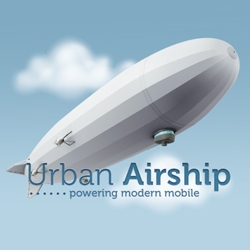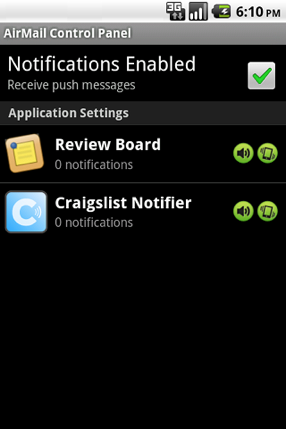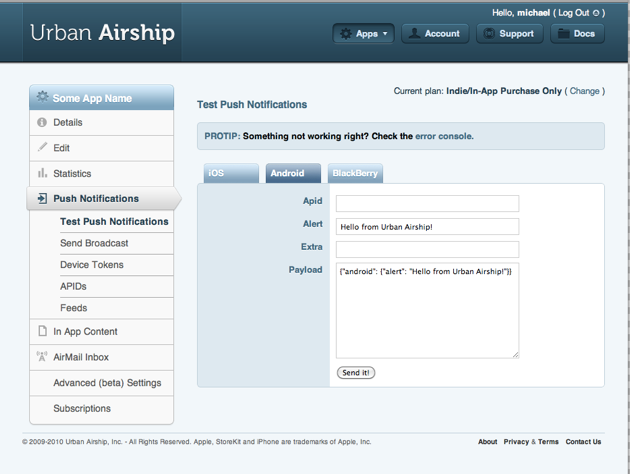 Push notifications, which allow you to receive alerts without having to manually open an application, are a big deal on mobile devices. They’re important enough, in fact, that some startups have sprung up with the sole mission of making it easy for mobile developers to integrate them into their apps. One such startup is Urban Airship, and tonight the service is adding Android to its roster of supported devices (it already supports apps on both iPhone and Android).
Push notifications, which allow you to receive alerts without having to manually open an application, are a big deal on mobile devices. They’re important enough, in fact, that some startups have sprung up with the sole mission of making it easy for mobile developers to integrate them into their apps. One such startup is Urban Airship, and tonight the service is adding Android to its roster of supported devices (it already supports apps on both iPhone and Android).
Developers have plenty of reasons to send out push notifications to users — they can include things like important messages about updates, breaking news, or gaming challenges (they’re also good for keeping users engaged long after they’ve initially installed an app). Getting a notification from an application that uses Urban Airship should be pretty familiar to most Android users: you’ll see a notice pop up in the message slider at the top of the screen, and tapping on it will execute an action (generally taking you to whatever app sent the message).

You may remember that Google began offering its own cloud-based notification service that’s integrated into Android with the launch of Froyo, but Urban Airship isn’t using it. CEO Scott Kveton says this is for a few reasons. First, Google’s push service only works on Android 2.2, which still has fairly limited distribution — Urban Airship’s will work on Android phones running 1.5 and up.
Urban Airship also gives developers more flexibility with their messaging. Using Urban Airship’s control panel, developers can see how frequently users are engaging with, or “clicking through” messages. Developers can also A/B test their messages to see which ones users respond best to, and they can tailor their messaging campaigns to be sent out in multiple batches, sending them out based on each user’s usage patterns. Finally, the service operates across iPhone and BlackBerry in addition to Android — if your app is available on multiple platforms, you can use the Urban Airship backend to manage your campaigns across all of them.
However, the new service comes with one quirk — when a user downloads an Android application that has integrated Urban Airship’s push service, they’ll be prompted to download a separate helper Urban Airship application. They’ll only have to do this once (any subsequent Urban Airship-enabled apps they download will use the same helper app). But it may still rub some Android users the wrong way, as it’s rare for an application to immediately prompt users to download another, separate app. Kveton says was done to help conserve battery life and because this model is more secure. However, he said if users object, the service could potentially allow developers to “bake in” Urban Airship notifications without he need for the helper app.
Urban Airship charges developers based on the number of messages they distribute. The company has sent nearly 1 billion notifications to over 35 million devices in just over a year, and it has over 3,000 customers. Customers include Tapulous, Justin.tv, Newsweek, Gowalla, Dictionary.com, the DNC, and LivingSocial.
